What Is The Most Exciting Thing You Hope To Learn?
What is the most exciting thing you hope to learn?
More Posts from Nasa and Others

No, this red beam in space isn't a light saber! It's a galaxy, far, far away — 44 million light-years away, to be exact.
We often imagine galaxies as having massive spiral arms or thick disks of dust, but not all galaxies are oriented face-on as viewed from Earth. From our viewpoint, our Spitzer Space Telescope can detect this galaxy's infrared light but can only view the entire galaxy on its side where we can't see its spiral features. We know it has a diameter of roughly 60,000 light-years — a little more than half the diameter of our own Milky Way galaxy.
Make sure to follow us on Tumblr for your regular dose of space: http://nasa.tumblr.com.
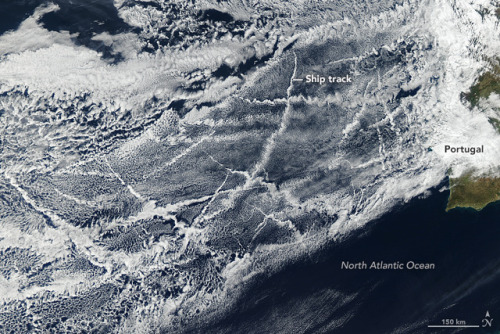
A patchwork of bright, criss-crossing cloud trails was created by ships churning through the Atlantic Ocean off the coast of Portugal and Spain in this image captured by one of our Earth observing satellites. The narrow clouds known as ship tracks, form when water vapor condenses around tiny particles of pollution that ships emit.
Some of the pollution particles generated by ships (especially sulfates) are soluble in water and serve as the seeds around which cloud droplets form. Clouds infused with ship exhaust have more and smaller droplets than unpolluted clouds. Because of this, the light hitting the polluted clouds scatters in many directions, making them appear brighter and thicker than unpolluted marine clouds, which are typically seeded by larger, naturally occurring particles such as sea salt.
Learn more about this image HERE.
Make sure to follow us on Tumblr for your regular dose of space: http://nasa.tumblr.com.
You Are Made of Stardust
Though the billions of people on Earth may come from different areas, we share a common heritage: we are all made of stardust! From the carbon in our DNA to the calcium in our bones, nearly all of the elements in our bodies were forged in the fiery hearts and death throes of stars.
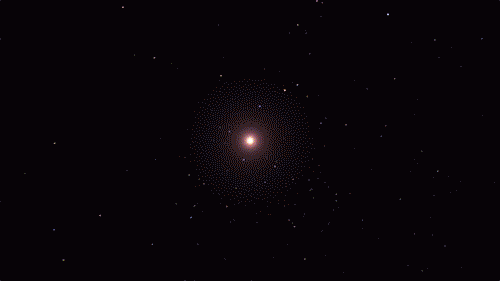
The building blocks for humans, and even our planet, wouldn’t exist if it weren’t for stars. If we could rewind the universe back almost to the very beginning, we would just see a sea of hydrogen, helium, and a tiny bit of lithium.
The first generation of stars formed from this material. There’s so much heat and pressure in a star’s core that they can fuse atoms together, forming new elements. Our DNA is made up of carbon, hydrogen, oxygen, nitrogen, and phosphorus. All those elements (except hydrogen, which has existed since shortly after the big bang) are made by stars and released into the cosmos when the stars die.

Each star comes with a limited fuel supply. When a medium-mass star runs out of fuel, it will swell up and shrug off its outer layers. Only a small, hot core called a white dwarf is left behind. The star’s cast-off debris includes elements like carbon and nitrogen. It expands out into the cosmos, possibly destined to be recycled into later generations of stars and planets. New life may be born from the ashes of stars.
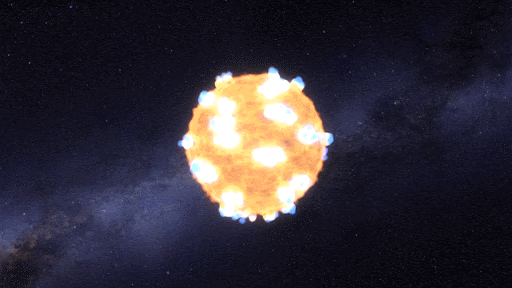
Massive stars are doomed to a more violent fate. For most of their lives, stars are balanced between the outward pressure created by nuclear fusion and the inward pull of gravity. When a massive star runs out of fuel and its nuclear processes die down, it completely throws the star out of balance. The result? An explosion!
Supernova explosions create such intense conditions that even more elements can form. The oxygen we breathe and essential minerals like magnesium and potassium are flung into space by these supernovas.
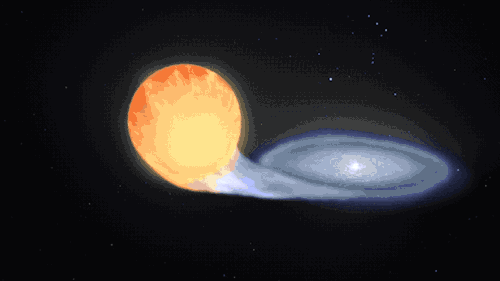
Supernovas can also occur another way in binary, or double-star, systems. When a white dwarf steals material from its companion, it can throw everything off balance too and lead to another kind of cataclysmic supernova. Our Nancy Grace Roman Space Telescope will study these stellar explosions to figure out what’s speeding up the universe’s expansion.
This kind of explosion creates calcium – the mineral we need most in our bodies – and trace minerals that we only need a little of, like zinc and manganese. It also produces iron, which is found in our blood and also makes up the bulk of our planet’s mass!

A supernova will either leave behind a black hole or a neutron star – the superdense core of an exploded star. When two neutron stars collide, it showers the cosmos in elements like silver, gold, iodine, uranium, and plutonium.

Some elements only come from stars indirectly. Cosmic rays are nuclei (the central parts of atoms) that have been boosted to high speed by the most energetic events in the universe. When they collide with atoms, the impact can break them apart, forming simpler elements. That’s how we get boron and beryllium – from breaking star-made atoms into smaller ones.
Half a dozen other elements are created by radioactive decay. Some elements are radioactive, which means their nuclei are unstable. They naturally break down to form simpler elements by emitting radiation and particles. That’s how we get elements like radium. The rest are made by humans in labs by slamming atoms of lighter elements together at super high speeds to form heavier ones. We can fuse together elements made by stars to create exotic, short-lived elements like seaborgium and einsteinium.
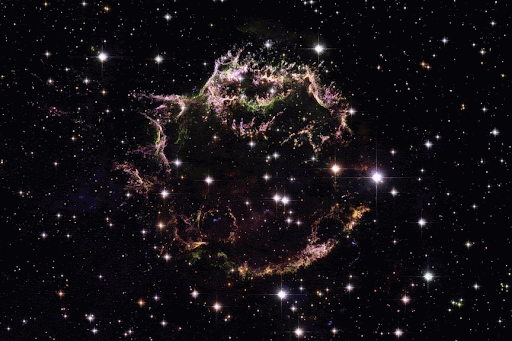
From some of the most cataclysmic events in the cosmos comes all of the beauty we see here on Earth. Life, and even our planet, wouldn’t have formed without them! But we still have lots of questions about these stellar factories.
In 2006, our Stardust spacecraft returned to Earth containing tiny particles of interstellar dust that originated in distant stars, light-years away – the first star dust to ever be collected from space and returned for study. You can help us identify and study the composition of these tiny, elusive particles through our Stardust@Home Citizen Science project.
Our upcoming Roman Space Telescope will help us learn more about how elements were created and distributed throughout galaxies, all while exploring many other cosmic questions. Learn more about the exciting science this mission will investigate on Twitter and Facebook.
Make sure to follow us on Tumblr for your regular dose of space!
Did what you study in college prepare you for this career choice? How did you figure out this career was something you were interested in?

Deniz Burnham
A former NASA intern, Deniz Burnham started her career as an engineer on an oil rig in Prudhoe Bay, Alaska, and went on to lead operations on drilling rigs in Canada, Ohio, and Texas. https://go.nasa.gov/3wDpfBo
Make sure to follow us on Tumblr for your regular dose of space!
Ocean Worlds Beyond Earth
We’re incredibly lucky to live on a planet drenched in water, nestled in a perfect distance from our sun and wrapped with magnetic fields keeping our atmosphere intact against harsh radiation and space weather.

We know from recent research that life can persist in the cruelest of environments here on Earth, which gives us hope to finding life thriving on other worlds. While we have yet to find life outside of Earth, we are optimistic about the possibilities, especially on other ocean worlds right here in our solar system.
So…What’s the News?!
Two of our veteran missions are providing tantalizing new details about icy, ocean-bearing moons of Jupiter and Saturn, further enhancing the scientific interest of these and other “ocean worlds” in our solar system and beyond!
Cassini scientists announce that a form of energy for life appears to exist in Saturn’s moon Enceladus, and Hubble researchers report additional evidence of plumes erupting from Jupiter’s moon Europa.
The Two Missions: Cassini and Hubble
Cassini
Our Cassini spacecraft has found that hydrothermal vents in the ocean of Saturn’s icy moon Enceladus are producing hydrogen gas, which could potentially provide a chemical energy source for life.

Cassini discovered that this little moon of Saturn was active in 2005. The discovery that Enceladus has jets of gas and icy particles coming out of its south polar region surprised the world. Later we determined that plumes of material are coming from a global ocean under the icy crust, through large cracks known as “tiger stripes.”

We have more evidence now – this time sampled straight from the plume itself – of hydrothermal activity, and we now know the water is chemically interacting with the rock beneath the ocean and producing the kind of chemistry that could be used by microbes IF they happened to be there.

This is the culmination of 12 years of investigations by Cassini and a capstone finding for the mission. We now know Enceladus has nearly all the ingredients needed for life as we know it.

The Cassini spacecraft made its deepest dive through the plume on Oct. 28, 2015. From previous flybys, Cassini determined that nearly 98% of the gas in the plume is water and the rest is a mixture of other molecules, including carbon dioxide, methane and ammonia.

Cassini’s other instruments provided evidence of hydrothermal activity in the ocean. What we really wanted to know was…Is there hydrogen being produced that microbes could use to make energy? And that’s exactly what we found!

To be clear…we haven’t discovered microbes at Enceladus, but vents of this type at Earth host these kinds of life. We’re cautiously excited at the prospect that there might be something like this at Enceladus too!
Hubble
The Hubble Space Telescope has also been studying another ocean world in our solar system: Europa!

Europa is one of the four major moons of Jupiter, about the size of our own moon but very different in appearance. It’s a cold, icy world with a relatively smooth, bright surface crisscrossed with dark cracks and patches of reddish material.

What makes Europa interesting is that it’s believed to have a global ocean, underneath a thick crust of ice. In fact, it’s got about twice as much ocean as planet Earth!

In 2014, we detected evidence of intermittent water plumes on the surface of Europa, which is interesting because they may provide us with easier access to subsurface liquid water without having to drill through miles of ice.

And now, in 2016, we’ve found one particular plume candidate that appears to be at the same location that it was seen in 2014.
This is exciting because if we can establish that a particular feature does repeat, then it is much more likely to be real and we can attempt to study and understand the processes that cause it to turn on or off.

This plume also happens to coincide with an area where Europa is unusually warm as compared to the surrounding terrain. The plume candidates are about 30 to 60 miles (50 to 100 kilometers) in height and are well-positioned for observation, being in a relatively equatorial and well-determined location.
What Does All This Mean and What’s Next?
Hubble and Cassini are inherently different missions, but their complementary scientific discoveries, along with the synergy between our current and planned missions, will help us in finding out whether we are alone in the universe.
Hubble will continue to observe Europa. If you’re wondering how we might be able to get more information on the Europa plume, the upcoming Europa Clipper mission will be carrying a suite of 9 instruments to investigate whether the mysterious icy moon could harbor conditions favorable for life. Europa Clipper is slated to launch in the 2020s.

This future mission will be able to study the surface of Europa in great detail and assess the habitability of this moon. Whether there’s life there or not is a question for this future mission to discover!
Make sure to follow us on Tumblr for your regular dose of space: http://nasa.tumblr.com
Space Station Research: Air and Space Science
Each month, we highlight a different research topic on the International Space Station. In June, our focus is Air and Space Science.

How is the space station being used to study space? Studies in fundamental physics address space, time, energy and the building blocks of matter. Recent astronomical observation and cosmological models strongly suggest that dark matter and dark energy, which are entities not directly observed and completely understood, dominate these interactions at the largest scales.

The space station provides a modern and well-equipped orbiting laboratory for a set of fundamental physics experiments with regimes and precision not achievable on the ground.
For example, the CALorimetric Electron Telescope (CALET) is an astrophysics mission that searches for signatures of dark matter (pictured above). It can observe discrete sources of high energy particle acceleration in our local region of the galaxy.
How is the space station contributing to aeronautics? It provides a long-duration spaceflight environment for conducting microgravity physical science research. This environment greatly reduces buoyancy-driven convection and sedimentation in fluids. By eliminating gravity, space station allows scientists to advance our knowledge in fluid physics and materials science that could lead to better designated air and space engines; stronger, lighter alloys; and combustion processes that can lead to more energy-efficient systems.

How is the space station used to study air? The Cloud-Aerosol Transport System (CATS) is a laster remote-sensing instrument, or lidar, that measures clouds and tiny aerosol particles in the atmosphere such as pollution, mineral dust and smoke. These atmospheric components play a critical part in understanding how human activities such as fossil fuel burning contribute to climate change.

The ISS-RapidScat is an instrument that monitors winds for climate research, weather predictions and hurricane monitoring from the International Space Station.

For more information on space station research, follow @ISS_Research on Twitter!
Make sure to follow us on Tumblr for your regular dose of space: http://nasa.tumblr.com
What's Made in a Thunderstorm and Faster Than Lightning? Gamma Rays!
A flash of lightning. A roll of thunder. These are normal stormy sights and sounds. But sometimes, up above the clouds, stranger things happen. Our Fermi Gamma-ray Space Telescope has spotted bursts of gamma rays - some of the highest-energy forms of light in the universe - coming from thunderstorms. Gamma rays are usually found coming from objects with crazy extreme physics like neutron stars and black holes.
So why is Fermi seeing them come from thunderstorms?

Thunderstorms form when warm, damp air near the ground starts to rise and encounters colder air. As the warm air rises, moisture condenses into water droplets. The upward-moving water droplets bump into downward-moving ice crystals, stripping off electrons and creating a static charge in the cloud.

The top of the storm becomes positively charged, and the bottom becomes negatively charged, like two ends of a battery. Eventually the opposite charges build enough to overcome the insulating properties of the surrounding air - and zap! You get lightning.

Scientists suspect that lightning reconfigures the cloud's electrical field. In some cases this allows electrons to rush toward the upper part of the storm at nearly the speed of light. That makes thunderstorms the most powerful natural particle accelerators on Earth!

When those electrons run into air molecules, they emit a terrestrial gamma-ray flash, which means that thunderstorms are creating some of the highest energy forms of light in the universe. But that's not all - thunderstorms can also produce antimatter! Yep, you read that correctly! Sometimes, a gamma ray will run into an atom and produce an electron and a positron, which is an electron's antimatter opposite!

The Fermi Gamma-ray Space Telescope can spot terrestrial gamma-ray flashes within 500 miles of the location directly below the spacecraft. It does this using an instrument called the Gamma-ray Burst Monitor which is primarily used to watch for spectacular flashes of gamma rays coming from the universe.

There are an estimated 1,800 thunderstorms occurring on Earth at any given moment. Over the 10 years that Fermi has been in space, it has spotted about 5,000 terrestrial gamma-ray flashes. But scientists estimate that there are 1,000 of these flashes every day - we're just seeing the ones that are within 500 miles of Fermi's regular orbits, which don't cover the U.S. or Europe.
The map above shows all the flashes Fermi has seen since 2008. (Notice there's a blob missing over the lower part of South America. That's the South Atlantic Anomaly, a portion of the sky where radiation affects spacecraft and causes data glitches.)

Fermi has also spotted terrestrial gamma-ray flashes coming from individual tropical weather systems. The most productive system we've seen was Tropical Storm Julio in 2014, which later became a hurricane. It produced four flashes in just 100 minutes!

Learn more about what Fermi's discovered about gamma rays over the last 10 years and how we're celebrating its accomplishments.
Make sure to follow us on Tumblr for your regular dose of space: http://nasa.tumblr.com.
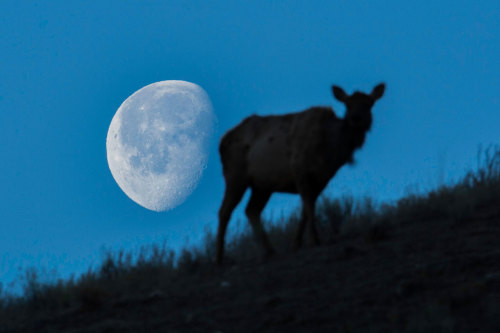
Our friend - the Moon - is putting on a show tonight!
Look to the sky at 12:44 a.m. EDT to see the first full Moon of summer in the Northern Hemisphere and a partial penumbral eclipse, visible from most of North America. Want more info on this special occurrence? click HERE.
Make sure to follow us on Tumblr for your regular dose of space: http://nasa.tumblr.com
Celebrate #BlackHoleFriday with Nurturing Baby Stars

Are you throwing all your money into a black hole today?
Forget Black Friday — celebrate #BlackHoleFriday with us and get sucked into this recent discovery of a black hole that may have sparked star births across multiple galaxies.
If confirmed, this discovery would represent the widest reach ever seen for a black hole acting as a stellar kick-starter — enhancing star formation more than one million light-years away. (One light year is equal to 6 trillion miles.)
A black hole is an extremely dense object from which no light can escape. The black hole's immense gravity pulls in surrounding gas and dust. Sometimes, black holes hinder star birth. Sometimes — like perhaps in this case — they increase star birth.
Telescopes like our Chandra X-ray Observatory help us detect the X-rays produced by hot gas swirling around the black hole. Have more questions about black holes? Click here to learn more.
Make sure to follow us on Tumblr for your regular dose of space: http://nasa.tumblr.com.
-
 watch reblogged this · 1 year ago
watch reblogged this · 1 year ago -
 alfaazbrothersak47 liked this · 4 years ago
alfaazbrothersak47 liked this · 4 years ago -
 mygoopfestivalpasta liked this · 4 years ago
mygoopfestivalpasta liked this · 4 years ago -
 theoncomingwolf42 liked this · 4 years ago
theoncomingwolf42 liked this · 4 years ago -
 kewpup liked this · 4 years ago
kewpup liked this · 4 years ago -
 just-a-duck-please liked this · 4 years ago
just-a-duck-please liked this · 4 years ago -
 shailendra65631 reblogged this · 4 years ago
shailendra65631 reblogged this · 4 years ago -
 shailendra65631 liked this · 4 years ago
shailendra65631 liked this · 4 years ago -
 jchapa13 liked this · 4 years ago
jchapa13 liked this · 4 years ago -
 dragons-barb liked this · 4 years ago
dragons-barb liked this · 4 years ago -
 danny1234 liked this · 4 years ago
danny1234 liked this · 4 years ago -
 kindannoying03-blog liked this · 4 years ago
kindannoying03-blog liked this · 4 years ago -
 bitsofsciencelife reblogged this · 4 years ago
bitsofsciencelife reblogged this · 4 years ago -
 buffystolethetardis liked this · 4 years ago
buffystolethetardis liked this · 4 years ago -
 cyare-fi liked this · 4 years ago
cyare-fi liked this · 4 years ago -
 to-the-road liked this · 4 years ago
to-the-road liked this · 4 years ago -
 joostacheinthemaking liked this · 4 years ago
joostacheinthemaking liked this · 4 years ago -
 fool-of-a-tooook reblogged this · 4 years ago
fool-of-a-tooook reblogged this · 4 years ago -
 fool-of-a-tooook liked this · 4 years ago
fool-of-a-tooook liked this · 4 years ago -
 delightfulpaperpost liked this · 4 years ago
delightfulpaperpost liked this · 4 years ago -
 dandelions-dancing liked this · 4 years ago
dandelions-dancing liked this · 4 years ago -
 toto-on-fire liked this · 4 years ago
toto-on-fire liked this · 4 years ago -
 spacenerd84 liked this · 4 years ago
spacenerd84 liked this · 4 years ago -
 harimenui-forever liked this · 4 years ago
harimenui-forever liked this · 4 years ago -
 yuiko2627 liked this · 4 years ago
yuiko2627 liked this · 4 years ago -
 ashjackson69-blog reblogged this · 4 years ago
ashjackson69-blog reblogged this · 4 years ago -
 riki0113 liked this · 4 years ago
riki0113 liked this · 4 years ago -
 hizrah liked this · 4 years ago
hizrah liked this · 4 years ago -
 delicatemusictale liked this · 4 years ago
delicatemusictale liked this · 4 years ago -
 glitterytoadscissorsfan liked this · 4 years ago
glitterytoadscissorsfan liked this · 4 years ago -
 aero-cosmo-blog liked this · 4 years ago
aero-cosmo-blog liked this · 4 years ago -
 nyuthewolf liked this · 4 years ago
nyuthewolf liked this · 4 years ago -
 hassan-1968 liked this · 4 years ago
hassan-1968 liked this · 4 years ago -
 wanderingsofal liked this · 4 years ago
wanderingsofal liked this · 4 years ago -
 chocolateforyou liked this · 4 years ago
chocolateforyou liked this · 4 years ago -
 arius-starwalker-1412 liked this · 4 years ago
arius-starwalker-1412 liked this · 4 years ago -
 rosaliachristian liked this · 4 years ago
rosaliachristian liked this · 4 years ago -
 sunfogo liked this · 4 years ago
sunfogo liked this · 4 years ago -
 nonsensicalbogwitch reblogged this · 4 years ago
nonsensicalbogwitch reblogged this · 4 years ago -
 nonsensicalbogwitch liked this · 4 years ago
nonsensicalbogwitch liked this · 4 years ago -
 lesbiangummybearmafia liked this · 4 years ago
lesbiangummybearmafia liked this · 4 years ago -
 etfoxzi liked this · 4 years ago
etfoxzi liked this · 4 years ago
Explore the universe and discover our home planet with the official NASA Tumblr account
1K posts